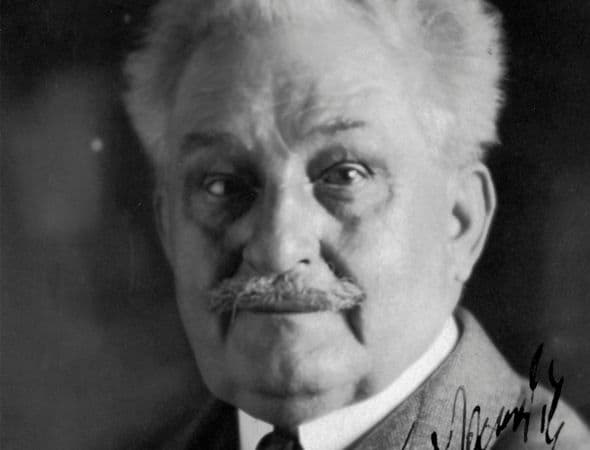JANACEK: Sinfonietta
by Jeff Counts
THE COMPOSER – LEOŠ JANÁČEK (1854–1928) – Born just 13 years after his Czech countryman Dvořák, Leós Janáček should have been an established elder statesman by the time the last decade of his life came around. He wasn’t. By then, he had spent most of his career in the city of Brno (capital of his beloved Moravian homeland region), and his successes as a composer were modest until the opera Jenufa began making an international splash in 2016. From that moment forward, he enjoyed his most intensively creative period and confirmed himself as an essential artistic innovator of the 20th century, not the 19th. Important works from his last years include The Cunning Little Vixen, the two string quartets, the Glagolitic Mass, Mládí, and the Sinfonietta.

THE HISTORY – The Sinfonietta of 1926 was completed just two years before Janáček died, and it represented a culmination of ideas and ideals that were important to him throughout his life. It was 1925, the story goes, when he happened upon a military band performance in a park and imagined himself composing a set of fanfares that matched the infectious patriotic sentiment of what he was hearing. Moravia had been part of Czechoslovakia since the World War I, and a subject of the Hapsburg Empire before that, so a certain individualistic cultural honor was to be expected amongst the citizens in and around Brno. Janáček definitely felt it himself and used his fanfare inspiration to fulfill an interesting commission a few months later. The Sokol gymnastics movement was founded in Prague in 1862 and continued into the 20th century as a means of honing the bodies and minds of young Czech men and (eventually) women. Their events were quietly nationalist in spirit and provided an opportunity for Czechs of every stripe to indulge in some healthy civic pride. So, when organizers of an upcoming Sokol festival approached Janáček for a new work, he knew it would be a perfect outlet for his military band project. He dedicated the Sinfonietta to “The Czechoslovak Armed Forces” and devised a scenario of landmarks to accompany its five movements. Movement one opens, of course, with a herald of militaristic brass. Movement two portrays Špilberk Castle, while the third movement depicts the Brno Monastery. In movement four we are transported through the streets of downtown Brno during the liberation, our progress halting in the finale before the great Brno Town Hall. The fanfares invoking that special day in the park return at the end and through them we feel the bright, generous character of a man whose time came late, but was not wasted.
THE WORLD – Elsewhere in 1926, Gertrude Ederle became the first woman to swim the English Channel, Hirohito was crowned Emperor of Japan, Henry Ford announced the 40-hour workweek, and Harry Houdini died on Halloween.
THE CONNECTION – Despite its popularity, Janáček’s Sinfonietta has not been often performed by Utah Symphony. The most recent concerts were in 2001 with Keith Lockhart on the podium.











